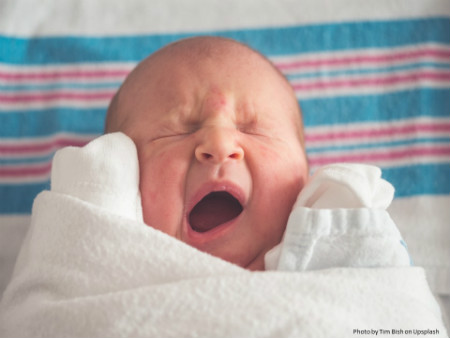In 2006, Chambers and colleagues published an article linking selective serotonin reuptake inhibitor (SSRI) antidepressant use during late pregnancy to an increased risk of persistent pulmonary hypertension in the newborn (PPHN). PPHN is a cardiovascular syndrome typically occurring in full-term or near-term infants. After birth, the infant’s pulmonary vascular resistance remains high; blood is shunted away from the lungs and is therefore not fully oxygenated. Newborns with PPHN typically present with respiratory distress shortly after birth, typically within 12 hours of delivery.
This initial report understandably raised concerns regarding the use of SSRIs and ultimately prompted the FDA to recommend a change in the labeling for SSRI antidepressants to include a warning regarding risk for PPHN.
Since that time, we have seen a number of studies evaluating the risk of PPHN in infants exposed to SSRIs during pregnancy (reviewed here). Because many of these studies either showed no risk of PPHN or a much smaller risk than estimated in the original report, the FDA decided to revise its warning, stating that it was not possible draw definitive conclusions regarding the link between SSRI exposure and PPHN.
Another large study has been published, and this is arguably one of the better studies because it is large enough to control for depression and other potential confounding factors. This cohort study included a total of 3?789?330 pregnant women enrolled in Medicaid. In this analysis, a total of 128?950 women (3.4%) filled at least one prescription for antidepressants during the 90 days before delivery: 102?179 (2.7%) used an SSRI and 26?771 (0.7%) a non-SSRI.
The prevalence of PPHN was 20.8 per 10 000 births in the unexposed infants (95% CI, 20.4-21.3; n=7630) compared to 31.5 per 10 000 births in the SSRI-exposed group (95% CI, 28.3-35.2; n=332) and 29.1 per 10?000 births (95% CI, 23.3-36.4; n=78) in the non-SSRI-exposed group.
When the analysis was adjusted for potential confounding factors, the strength of the association was attenuated. For SSRIs, odds ratios were 1.51 (95% CI, 1.35-1.69) unadjusted and 1.10 (95% CI, 0.94-1.29) after restricting the analysis to women with histories of depression. For non-SSRIs, the odds ratios were 1.40 unadjusted (95% CI, 1.12-1.75) and 1.02 adjusted (95% CI, 0.77-1.35). Analyses restricted to PPHN in the absence of cardiac malformations, hypoplastic lung, or prematurity (primary PPHN) resulted in a slightly increased risk of PPHN for SSRIs (OR 1.28; 95% CI, 1.01-1.64).
There were other variables that were more strongly associated with PPHN: maternal diabetes (OR, 2.93; 95% CI, 2.72-3.15), obesity (OR, 2.02; 95% CI, 1.88-2.17), cesarean delivery (OR, 3.20; 95% CI, 3.06-3.35), and black race (OR, 1.30; 95% CI, 1.24- 1.36). These findings are consistent with previous studies of risk factors for PPHN.
This is the largest cohort studied to date, using advanced epidemiologic methods to minimize confounding by the underlying psychiatric illness and associated conditions and behaviors. Nonetheless, the researchers were not able to control for some potential confounding factors (e.g., smoking, use of NSAIDs, body mass index, diabetes severity). The authors state, “We cannot exclude the possibility, however, that the small increase in risk of primary PPHN observed for SSRIs is attributable to residual confounding.”
The Take-Home Message
Adding this large study to the data we already have, we can tell our patients that the risk of PPHN associated with late pregnancy exposure to SSRIs—if present—is smaller than previously reported. If we assume that the estimates of risk generated from this study are accurate, the absolute risk of PPHN is very small.
Ruta Nonacs, MD PhD
Huybrechts KF, Bateman BT, Palmsten K, et al. Antidepressant Use Late in Pregnancy and Risk of Persistent Pulmonary Hypertension of the Newborn. JAMA. 2015 Jun 2;313(21):2142-2151.








Leave A Comment